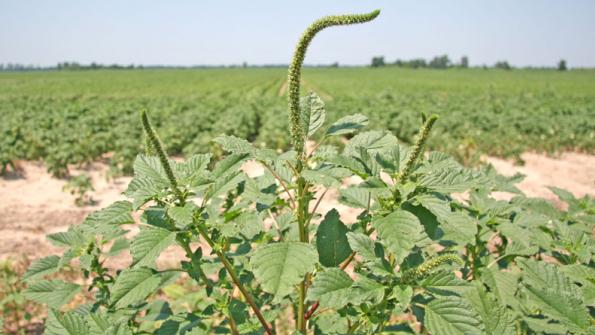
Scientists chastised for growing weed resistance problem
Despite a voluminous body of information and research, herbicide resistance in many weed species continues to grow.Waterhemp tale is just one chapter in the herbicide resistance saga as reports say as many as 220 million acres have been identified as containing herbicide resistant weeds.
April 16, 2012

By Mike Owen’s count, 77 of the 420 scientific papers presented at the recent Weed Science Society of America annual conference focused on herbicide resistance management.
The Extension weed specialist from Iowa State University also counted more than 806 papers presented since 1992 on the same subject at the society’s annual gatherings; 49 alone on herbicide resistant waterhemp.
And yet despite this voluminous body of information and research, the majority of waterhemp across the Midwest Corn Belt is resistant to at least one herbicide class, and some waterhemp is resistant to two classes. In all, waterhemp has been confirmed resistant to six herbicide classes.
Owen’s waterhemp tale is just one chapter in the herbicide resistance saga as reports from the society and other sources say as many as 220 million acres have been identified as containing herbicide resistant weeds.
This includes 376 resistant biotypes, 203 species (118 dicots and 85 monocots) resistant to one or more of 21 different herbicides.
Weed resistance to herbicides surfaced as an economic problem more than 30 years ago. Owen noted that weed science first addressed it in the 1980s when it created best management practices for warding off resistance to ALS inhibitor class herbicides, yet, “What have we done to address the problem since? Nothing,“ he answers.
It was a packed conference room that heard the veteran Midwest weed scientist chastise his profession.
He called herbicide resistance a “significant problem that is getting nothing but worse at an increasing rate,” he adds.
It is becoming more than a scientific or on-farm issue with a House oversight committee investigating USDA biotech regulation policies related to the growing resistance problem and national glyphosate stewardship forums. The term “superweed” is getting plenty of press in this political process.
It has grown to such a critical issue that the potential for government regulations to manage it is “more real than we want to imagine.” It could well be tied to the federal farm bill’s soil conservation title.
Owen said weed scientists have spent considerable time and money to change weed control practices to counter resistance while doing very little to change weed or vegetation management.
Very little discussion
Unfortunately, there is “very little” discussion about mechanical or cultural weed control practices, he says.
“People say farmers don’t want to do that. That’s right, they don’t, but what other alternatives will they soon have if they don’t take into consideration other strategies?” he questions.
Owen said when weed scientists recommend rate increases and adding herbicides to counter resistance they are “enabling simplicity and convenience. These two concepts do not work and have not ever worked, if we are truly objective.
“It behooves us to recognize that what we are doing is not working. What we are doing is making the situation worse and there is not a lot more we can do. We have to promote alternatives” like cultural and mechanical weed management,” Owen says.
Waterhemp’s notorious cousin, Palmer amaranth, has become the scourge of the weed resistant world in the Mid-South and Southeast. And it is spreading.
University of Arkansas associate professor and weed control specialist Jason Norsworthy said it will take Draconian, expensive measures to turn it back.
Herbicide resistant Palmer amaranth was identified first in 2004 in Macon County, Ga. Since then it has spread throughout the Mid-South and Southeast and is creeping into the Midwest.
To turn it back, Norsworthy says it will take an aggressive herbicide control program coupled with equally uncompromising hand weeding and rouging program.
He is recommending a 14-day schedule of non-glyphosate and residual herbicides coupled with a persistent scouting program to identify escapes.
Nothing short of a “zero tolerance” of herbicide resistant weeds will succeed in turning back this spreading menace, Norsworthy says.
About the Author(s)
You May Also Like





